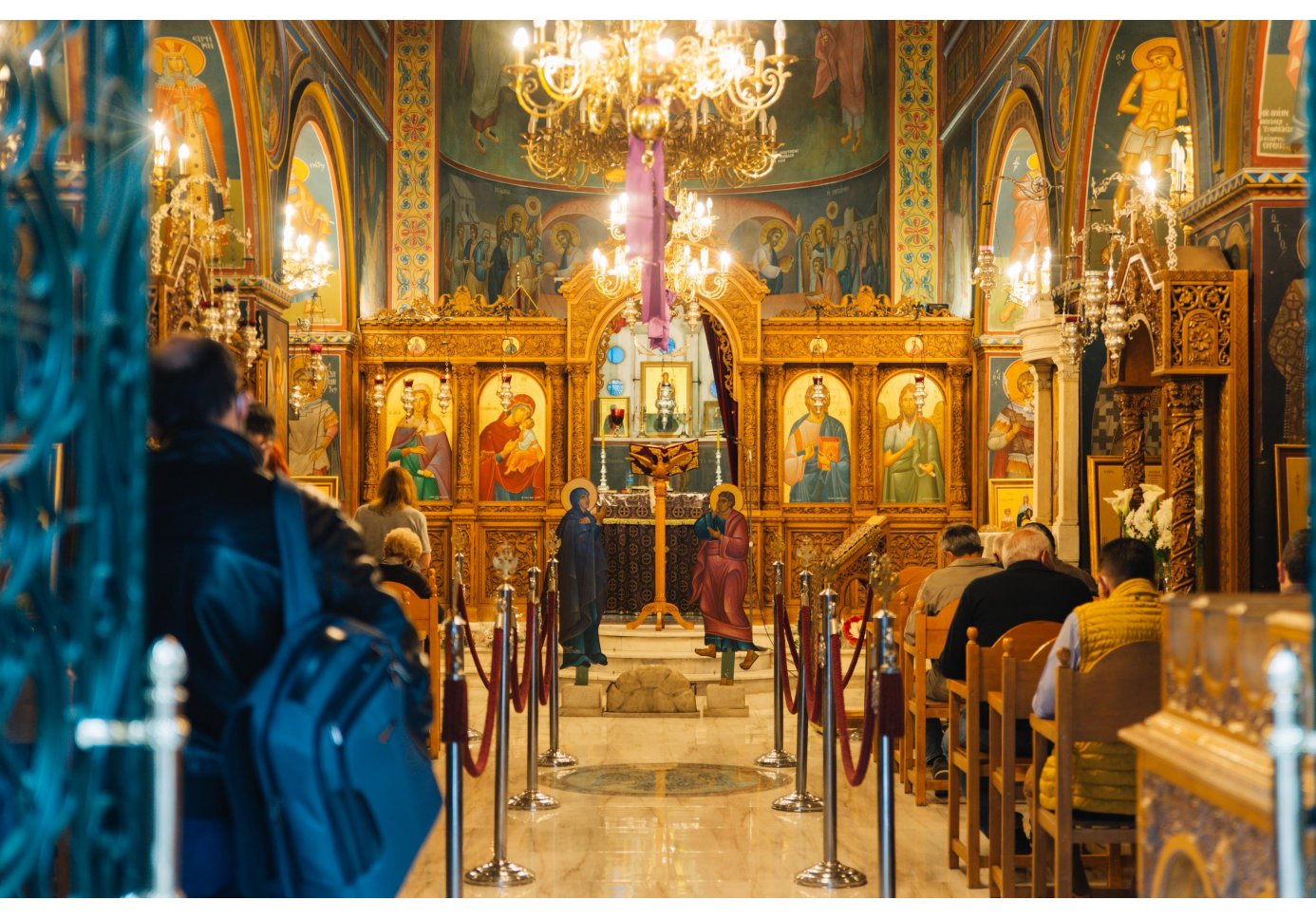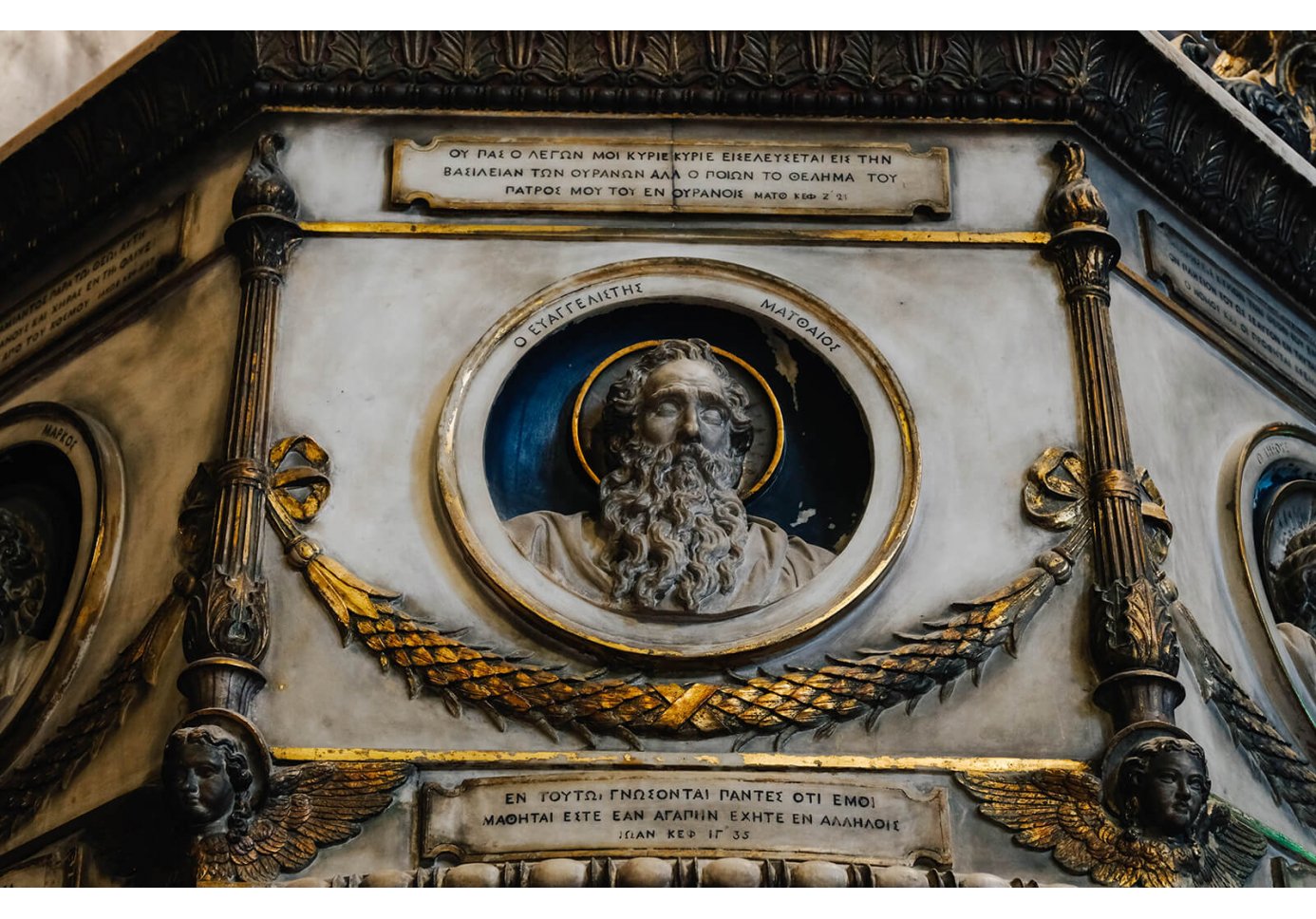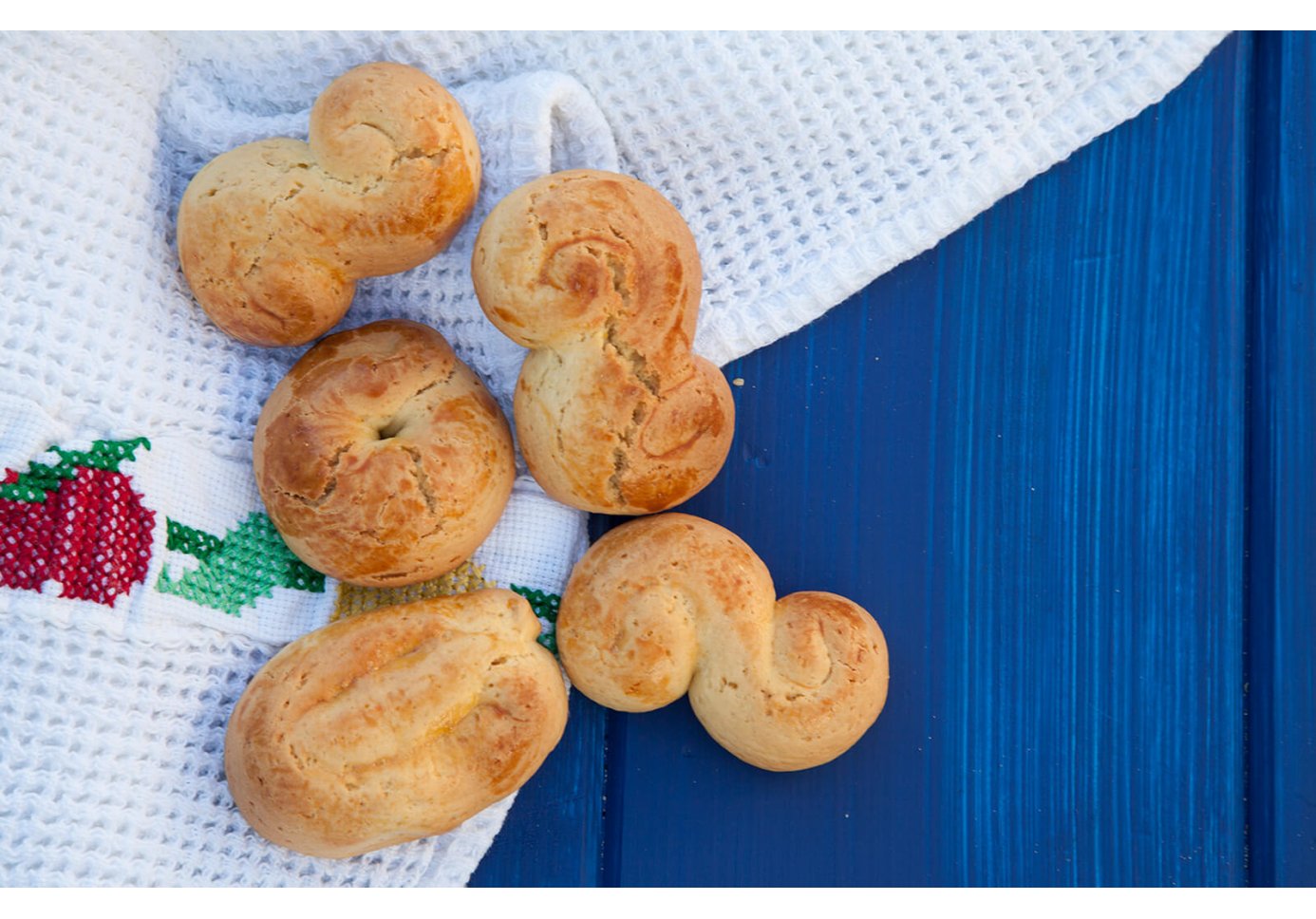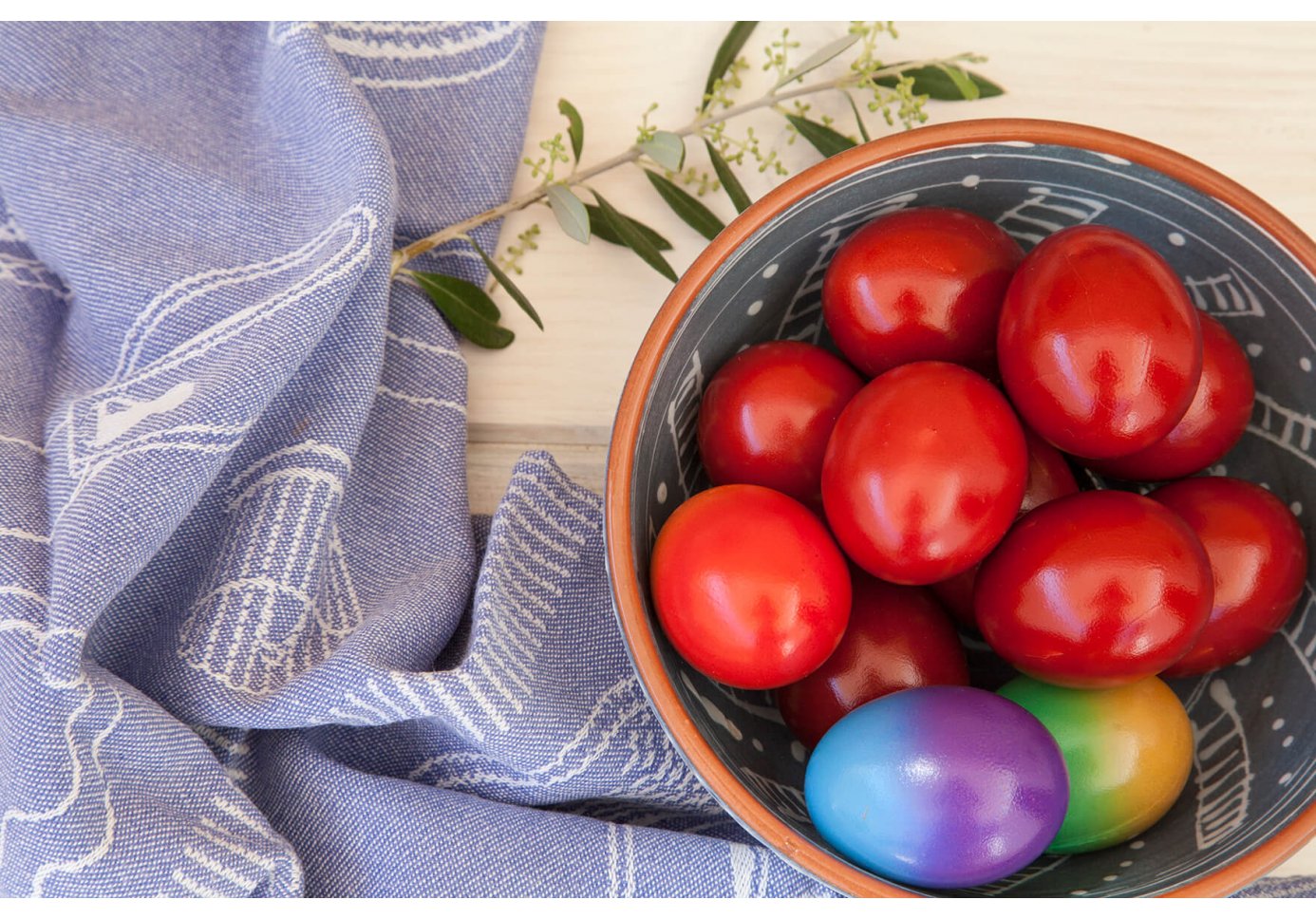If you’re in Athens in spring, the Easter festivities are not to be missed. Greek Orthodox Easter is the stuff that myths are made of: age-old fasting rituals, candle-lit processions, lambs whirling on a spit and fireworks at midnight. Many Athenians head for their ancestral homes on the islands or in the countryside. But in many ways Greek Easter—or Pascha—can be an even richer experience if you spend it in Athens.
Easter ABCs
Good Friday in Athens
Follow a candlelit procession through the streets
The one spectacle you won’t want to miss takes place on Good Friday. Called the Epitaphios, it begins around 9 pm. During the day, women in each parish decorate a wooden bier as a symbol of Christ’s coffin. They cover it with fresh flowers, producing works of art. In the evening, the faithful gather at the church. Carrying a beeswax candle, they walk around the neighbourhood together, behind the priest and the pallbearers who carry the holy bier topped with an icon of Christ. As the solemn procession moves through the streets, sometimes merging with those from nearby churches, the followers sing a haunting Byzantine hymn that expresses the sorrow of the Virgin Mary on the death of her son. Mourners dressed in black queue up to kiss the coffin.
Flower power: the Holy Bier is a beautiful highlight of Good Friday in Greece.
Photo: Thomas Gravanis
Easter Saturday
See the Holy Fire arrive from Jerusalem
Easter Saturday’s ceremonies represent the victory of light over darkness. They begin with the transfer of the mysterious flame of the Resurrection from the Holy Sepulchre in Jerusalem. After arriving in Athens by plane, it’s dispatched to Agioi Anargyroi church on Erechtheos Street in Plaka, which is always first to receive the flame. From there, the holy fire is taken to the Metropolitan Cathedral and then distributed to churches throughout Attica.
Sharing the flame of the Resurrection.
Photo: Georgios Makkas
Every Greek child stays up late to light a candle at Midnight Mass on Easter Saturday.
Photo: Manos Chatzikonstantis
On Saturday night, crowds dressed in their finest gather at every church for midnight mass. The faithful throng inside from 10 or 11 pm. The rest assemble outside closer to midnight. Religious or not, most Greeks wouldn’t dream of breaking this habit. Every one of them will be holding a white candle. Children often have special candles, called lambadas, elaborately decorated with ribbons and Easter symbols, a gift from their godparents.
The spectacle of Midnight Mass
As midnight approaches, all the lights in the church go out. The priest lights a candle from the eternal flame of the holy fire. Then announces “Christos Anesti” (Christ is risen!). As the church bells toll, the priest passes on the light from his candle. Each person passes on the light to others, with the same words. The person receiving the flame responds: Alithos Anesti or “Verily He is Risen”. Soon, the light from a single candle is passed on to the entire congregation.
A sea of candles flickers at Midnight Mass as church bells across Athens announce that Christ has risen.
Photo: Manos Chatzikonstantis
Christ has risen (and so have the fireworks above the Acropolis.)
Photo: Thomas Gravanis
At this point, the congregation tries to sing the magnificent Easter hymn, ‘Christ is risen from the dead’. But due to the firecrackers thrown by lads both young (and old enough to know better), the music is often drowned out. Fireworks burst and bang into the sky above the Acropolis, the bells of every church in Athens toll in a frenzy, and the streets fill up with pedestrians returning home with their lit candles. A particularly dramatic spot to watch the flickering processions is from the church of Agios Georgios at the summit of Lycabettus Hill. It’s equally impressive to watch the parade of candles winding its way down the steep hill afterwards.
A midnight Easter feast
Arriving home from church with their candles still alight, people smudge the sign of the cross three times above their front door to bless the house. Then everyone sits down for the traditional Easter supper. For many, it’s the first meat they will have eaten since the beginning of Lent, 40 days earlier.
The main dish is magiritsa, a soup made with the innards of the next day’s lamb, spring onions, dill and rice, thickened with beaten egg and seasoned with lemon juice. It's meant to soothe the stomach after the long fast and prepare it for the next day’s feasting. After the soup, everyone grabs a red Easter egg and challenges his neighbor to a ‘duel’, cracking tip against tip, base against base. The person whose egg refuses to crack is considered to have good luck for the rest of the year.
Easter Sunday
Greek Easter delicacy: oven-baked kokoretsi (lamb or goat intestines wrapped around seasoned offal).
Photo: Eleni Veziri
Traditional Greek Easter foods
Easter Sunday is spent preparing and devouring a whole lamb on a spit. Cooking the lamb is men’s work. They dig a pit and start a charcoal fire early on Easter morning, and then turn the animal slowly over coals for hours. If you don’t have a garden, it’s also a tradition to roast a lamb and kokoretsi in the oven. You may even see some Athenian women carrying their full baking trays to the local bakery.
The Easter celebrations begin early. Men gather round the spit to ‘supervise’, while the women are busy making salads and meze, setting the table with a bowl of crimson-dyed eggs. The festivities last until well after sunset, often with dancing as the full day of drinking wine and high spirits takes effect.
In Athens, there are plenty of restaurants where you’ll be able to enjoy a traditional Easter meal, whether a bowl of tripe soup after the midnight service or a full-blown Sunday lunch. Usually, the best way to find the right place is simply to follow your nose.



